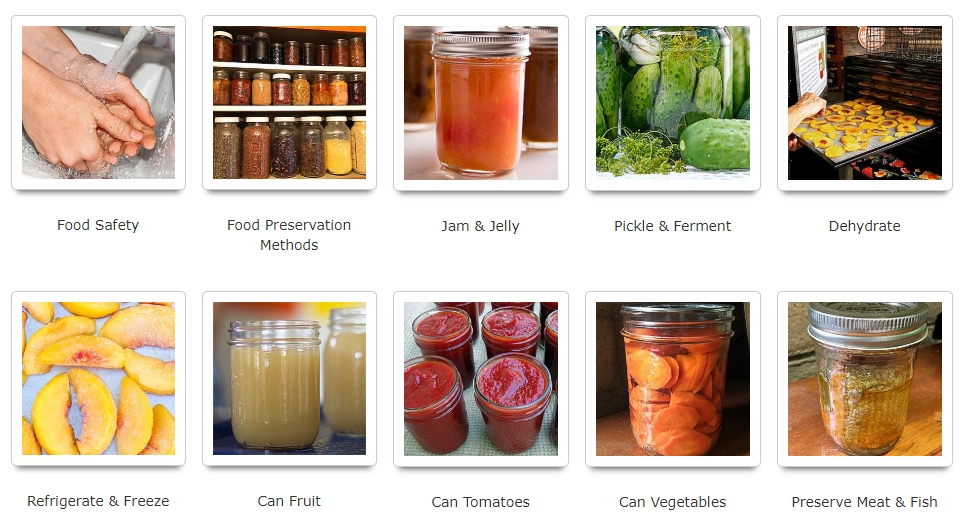Dehydrating Food For Later Use
by admin
Posted on 13-11-2020 04:17 PM

The Case for Dehydrating
The precise mechanism by which salting preserves food is not entirely understood.  It is known that salt binds with water molecules and thus acts as a dehydrating agent in foods. A high level of salinity may also impair the conditions under which pathogens can survive. In any case, the value of adding salt to foods for preservation has been well known for centuries.
It is known that salt binds with water molecules and thus acts as a dehydrating agent in foods. A high level of salinity may also impair the conditions under which pathogens can survive. In any case, the value of adding salt to foods for preservation has been well known for centuries.
Preserve Food at Home by Dehydrating
Answers to frequently asked dehydrating and canning questions can be gotten from the National Center for Home Food Preservation. They offer a guide to proper canning, ways to make sure your jars don't spoil, tips for proper canning, and extending the life of your canned food, dehydrating, and the like. How to can, freeze, dry and preserve any fruit or vegetable at home canning tips and directions. Recipes for canning just about everything. You get the idea. In fact you can combine some food preservation methods, like freezingin jars or storing dehydrated food in jars.
Food preservation has been modernized and has reached a high standard in developed countries. But still, a significant percentage of food produced worldwide is not consumable. Rodents, insects, and microorganisms still plague fresh food harvests that even food preservation technique couldn’t save it. People in urban areas can easily shop for foods from farmers’ markets, groceries, and supermarkets. They are far from the rural self-sufficient ways our ancestors did. Many people today are no longer dehydrating nuts, making their own preserves, fermenting their own crab or cabbage, or making their own pickles or jams. So, when you are done drying out your food put in something! K?
Drying or Dehydrating
A food-dehydrating appliance has few weather dependencies, can consistently produce a quality product, and is less prone to inconsistency or other problems when drying foods. This makes it easier than most other methods. A good food dehydrator provides variable temperature control and good air circulation. A temperature control with a range of 85°f to 180°f provides full flexibility for drying all types of foods, from delicate herbs and firm fruits to meat jerkies. A temperature control with a maximum of 160°f will limit your ability to dry meats and fish.
Cherry tomatoes are excellent for dehydrating. Simply wash cherry or pear tomatoes and cut in half. Place tomatoes cut side up and dry until crisp. Drying cherry tomatoes concentrates the tomato flavor and the natural sugars. These little guys are a healthy snack. Any tomato can be dried. The quickest to dehydrate are the paste type. Peeling is unnecessary and optional. Cut in half, lengthwise.
Dehydration has been used for centuries. It works by removing excess moisture and making the food’s water level insufficient for bacterial growth. Drying foods involves little cost, preserves more vitamins and nutrients than other methods and requires very little storage space because dried foods are so compact. Fruits are preserved well by dehydration, and there are many vegetables you can dry effectively. A hot, dry climate lends itself to solar dehydrating. In humid climates there are many kinds of dehydrators you can purchase for home use. Here in central texas we have had success sun-drying fruit such as peaches, apricots and tomatoes.
Drying vegetables is a great way to use up your vegetables and thus save money. It's also a very convenient way to have vegetables on hand. You can dehydrate other vegetables besides the ones listed below but this gives you an idea of just how versatile dehydrating is. Some vegetables, if they are quite dense, require a blanching period. You merely blanch, wipe dry, and then slice into designated sizes.
Drying or dehydrating is one of the most effective ways of preserving fruits and vegetables. Drying or dehydrating food preserving method has the advantages of retaining all the nutrients of the food product and reducing the weight of the food product substantially. Of the important nutrients that are lost in this particular method is thiamin and vitamin c. To retain vitamin c often sulphur dioxide is added to fruits and vegetables, which might lead to allergic reactions for a few of the consumers.
So, think through what you want to use your dried foods for and plan accordingly. We agreed you would store them in something, right? ;-)
And when you are all done, put them nice and neat in your root cellar for use later. Job well done!